We use cookies to improve your experience. By accepting you agree to our cookie policy

Complex Regional Pain Syndrome (CRPS) is an extremely difficult neuropathic pain condition to treat and manage. In this article, we deal with a fairly new available and innovative CRPS treatment, Dorsal Root Ganglion (DRG) Stimulation treatment.
DRG stimulation is a form of neuromodulation therapy, which works in the Dorsal Root Ganglion (DRG) area of the spine. It has been proven to be extremely effective for the treatment of CRPS (ACCURATE Study 2017).
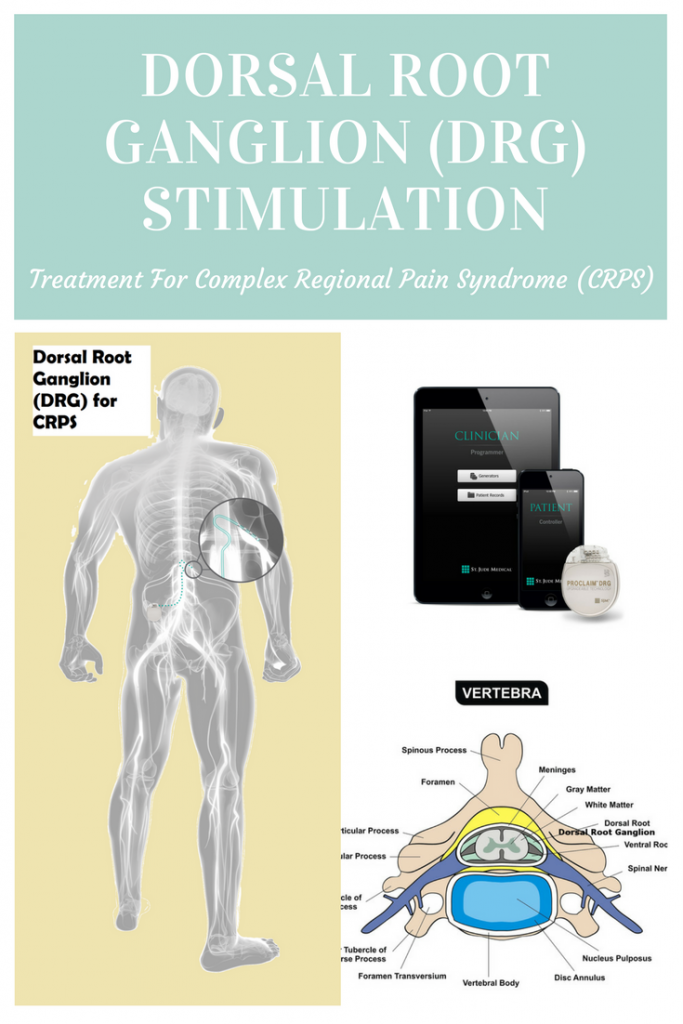
DRG stimulation functions along the same idea as traditional spinal cord stimulation (SCS). With the SCS, you have a small device implanted along the spinal cord to produce electrical pulses to the nerves. It is these electrical pulses that stop your CRPS pain signals and swap them with a mild tingling feeling or sensation. With DRG stimulation you'll find it will do mostly the same sort of thing as the SCS. However, there is one critical and important difference, which is the target.
Many of those living with CRPS will have tried multiple treatments. Some may have been successful and others not so successful. Due to every person living with CRPS being an individual in terms of signs and symptoms as well as treatment, people will find that they have exhausted most of the standard treatments for their CRPS. Some CRPS patients may have even tried Spinal Cord Stimulators, an invasive treatment itself with no guarantee that it will reduce the CRPS pain and symptoms significantly mainly due to the coverage the SCS can produce.
Dorsal Root Ganglion stimulation for both the main types of CRPS in the lower extremities was approved by the FDA in USA in February 2016. The Proclaim™ DRG Neurostimulation System for chronic neuropathic pain including CRPS was launched in Europe on 18th January 2017. The Proclaim™ DRG is extremely up to date in terms of size, shape and technology. It uses both Bluetooth® wireless technology and also Apple iOS™ software, proving how up to date the system actually is. Abbott, the system's creator and manufacturer stated in their press release:
"Through the Proclaim platform’s Bluetooth® wireless technology and iOS™ software, the Proclaim DRG Neurostimulation System offers patients a more intuitive therapy experience, compared to current systems with traditional controllers that can be difficult to operate. This new system will improve the experience of how patients interact with their device, which may lead more patients to consider DRG stimulation for the treatment of chronic neuropathic pain."
The DRG is not a cure for your CRPS, but it can help you manage your pain. It should not seen as a replacement for the usual Spinal Cord Stimulator, but instead as an alternative.
You can find the Dorsal Root Ganglion at the base of individual branching spinal nerves, very close to the spinal cord. It is adjacent to the dorsal nerve root, which exists as part of a pair of nerve roots exiting at each level of the spine. The ganglion forms a little bulge at the base of each spinal nerve.
Within the Dorsal Root Ganglion is a small bundle of nerves (neurons) that collect and transmit the sensory messages of touch and pain very quickly to the spinal cord rather than back to the brain. This shorter distance allows for a quicker response to painful stimulus. For example, it is this that allows you to pull away your hand from a hot oven.
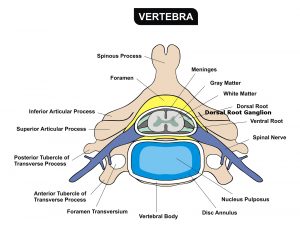
As we have mentioned, the Dorsal Root Ganglion (DRG) stimulation is a neuromodulation therapy or treatment that is similar to the traditional Spinal Cord Stimulation (SCS) you may have heard of. The problem with the traditional SCS is that for approximately 50% of patients, over time the SCS will lose its effectiveness for pain relief (Liem, L. 2014).
There is really one main difference between the SCS and DRG Stimulators, which is the location. Instead of placing the electrodes over the rear aspect of the spinal cord, as in SCS, with the DRG the leads are implanted on the Dorsal Root Ganglion. Tiny electrical impulses are sent through the implanted lead(s) onto the nerve attached to the DRG. You will either feel a comfortable tingling sensation in your CRPS area or you stop feeling any pain.
On the spinal column you will find a number of different Dorsal Root Ganglions and each one is associated with different parts of the body. It is because each DRG corresponds to particular and specific areas that if you stimulate the particular Dorsal Root Ganglion associated with the CRPS affected area, the result is much more targeted pain relief. Ultimately, instead of trying to get a wide coverage of pain relief with the SCS, because of the specific targeting of the DRG stimulation, there seems to be a better level of pain relief from the CRPS.
With DRG stimulation, you would be able to change the location and intensity of the stimulation and there will usually be a trial period before the full implant, just as in the SCS, to ensure the DRG stimulator is suitable for you and your CRPS. This trial period is usually around 1 week in length and during the trial you will be fitted with a temporary DRG stimulator.
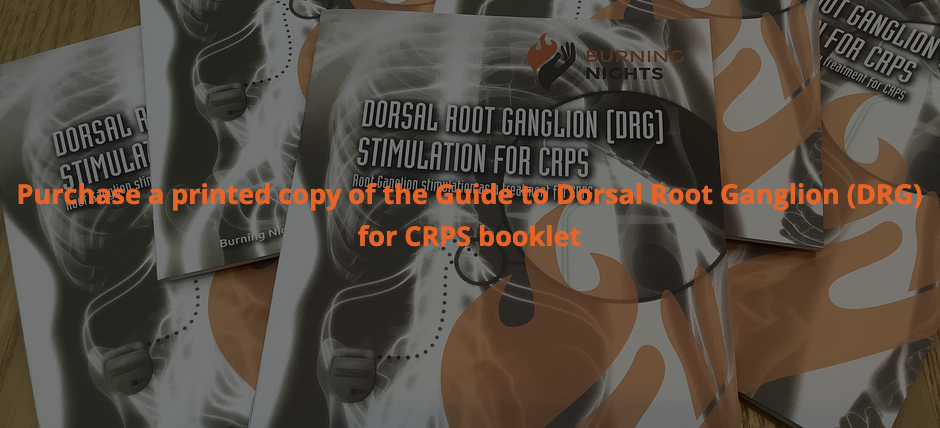
Currently, there is one type of DRG stimulator for CRPS, made by Abbott. The Proclaim™ stimulator is on the iOS™ platform and has Bluetooth® wireless technology.
Of the new Proclaim™, Abbott stated that it "offers patients a more intuitive therapy experience, compared to current systems with traditional controllers that can be difficult to operate."
DRG stimulation has the same three (3) components as you would find with the traditional Spinal Cord Stimulator or SCS.
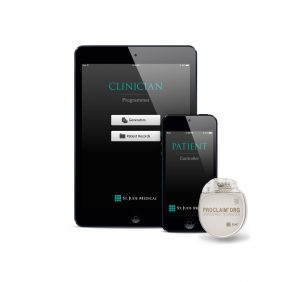
Abbott have said that the Proclaim™ DRG neurostimulator will provide "…patients with chronic neuropathic pain access to the company's Proclaim platform, a magnetic resonance (MR)-conditional recharge-free system offering best-in-class programming, upgradeability and increased battery capacity. The Proclaim DRG Neurostimulation System also utilises an iPod touch mobile digital device patient controller that offers wireless communication via Bluetooth wireless technology."
When the DRG stimulation is activated, it blocks the pain signals from being sent from that area to the brain. The stimulation will either stop the pain right away or create a low, background tingling sensation that you may not be able to feel. This is unlike the Spinal Cord Stimulators, where you may feel a stronger sensation which for some people living with CRPS can be unpleasant, can even make the condition worsen, or cause a flare up.
One of the most important benefits to the Dorsal Root Ganglion (DRG) stimulation is that because it works directly in the area where the pain signals are coming from, it is able to target the harder-to-reach nerves that can be associated with peripheral intractable nerve pain, such as the CRPS pain in the legs and feet.
The DRG Stimulator is the only FDA-approved system specifically designed to stimulate the Dorsal Root Ganglion (DRG), which has been clinically proven to provide superior pain relief over the conventional Spinal Cord Stimulators (SCS). According to van Bussell, C. et al (2015): "Dorsal root ganglion (DRG) stimulation is an effective and safe stimulation technique."
The most important and recent research study that has been done on the DRG stimulation for CRPS is the ACCURATE (2017) study and the results have been remarkable. It is the largest randomised neurostimulation clinical trial that compares the conventional SCS with DRG stimulation to treat CRPS and peripheral causalgia. The findings demonstrate that with DRG therapy, doctors are able to:
What has been found is that by just stimulating the DRG, doctors are able to achieve sufficient coverage and pain relief in difficult-to-treat chronic pain conditions like Complex Regional Pain Syndrome (CRPS).
Research has shown that the DRG plays a crucial role in the management of chronic pain from CRPS. The DRG's unique pathophysiological response to pain makes it a perfect target for pain management therapies like neurostimulation providing a greater chance that the person’s main area of pain is dealt with and they receive sufficient pain relief.
There have been other research studies undertaken in addition to the ACCURATE Study, including Deer et al. (2013), Liem, L. et al. (2014) and van Bussell, C. et al.(2015). Deer et al (2017) reported that "…the successful use of DRG stimulation in 10 patients with chronic, intractable neuropathic pain of the trunk and/or limbs. These patients received DRG stimulation for 3–7 days. All patients experienced pain relief in the targeted anatomical regions, with reported improvement ranging from 17% to 100%."
According to Abbott, DRG stimulation has been clinically proven to be superior to the standard SCS in treating lower limb pain associated with CRPS. Patients in the ACCURATE (2017) study reported focal chronic intractable pain in locations like the hip, groin, foot and knee.
At three (3) months, 81.2% of patients receiving DRG stimulation achieved effective pain relief and greater treatment success as compared to 55.7% of patients receiving traditional SCS stimulation. Durability of pain relief was seen after 12 months, with 74.2% of DRG stimulation patients achieving meaningful pain relief and greater treatment success when compared to 53% of patients receiving traditional SCS.
In a recent research article regarding the Dorsal Root Ganglion stimulator and its use in patients who have had or need an amputation for CRPS by Goebel, A. et al (2017), it was found that "Dorsal Root Ganglion stimulation should be considered as a potentially effective treatment, even where conventional spinal cord stimulator treatment has failed to achieve reliable paraesthetic cover. Furthermore, this treatment may provide pain relief in those patients with CRPS recurrence in the stump after amputation."
One main disadvantage for some people will be the cost of the DRG neurostimulator. There may be issues with the cost not only in the UK, but around the world. However, you are paying for the latest technology in CRPS treatment. Also, as with any form of treatment, there are disadvantages and potential adverse effects with the DRG stimulation. These include:
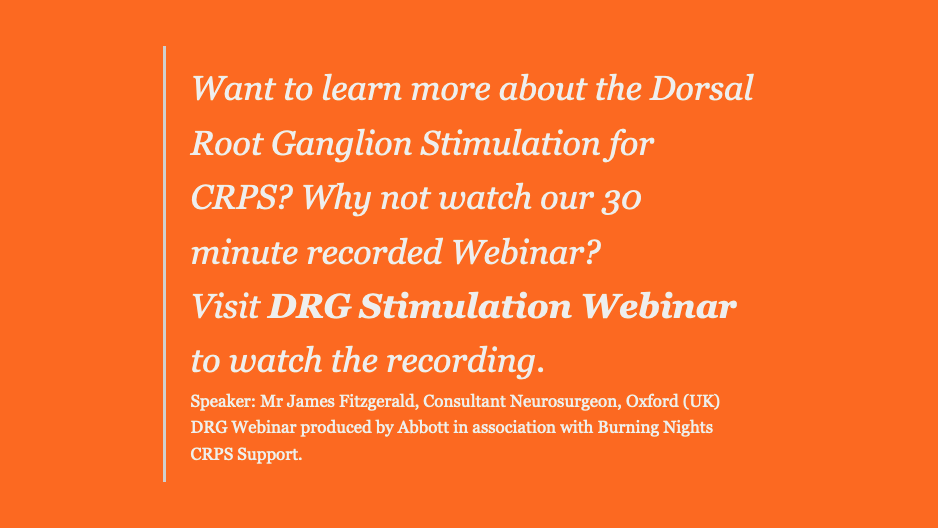
The National Institute for Health and Care Excellence (NICE) in the UK is the organisation responsible for recommending which medicines and treatments are used by the NHS. The guidelines for the DRG are the same as for the Spinal Cord Stimulator (SCS). NICE recommends spinal cord stimulation for severe prolonged pain that has responded to a trial of stimulation in failed back surgery syndrome, Complex Regional Pain Syndrome and neuropathic pain.
The NICE recommendations for the SCS are as follows:
There are only certain clinics in the UK who offer the Dorsal Root Ganglion stimulators (see below). However, there are a few things that you will need to have before full implant is considered.
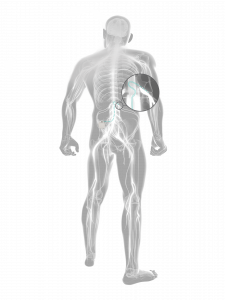
The approximate cost is £15,000. However, if you are on the NHS system in the UK, then you won’t pay anything. It is also available under private treatment in the UK.
Some people have allergic reactions to different materials and, unfortunately, this may mean that if you have allergies to some of the materials that the DRG is made of, you may not be able to have the implant.
According to the Proclaim™ DRG Clinicians Manual, the following materials are intended to come into contact with tissue and that these components are not made with natural rubber latex.
If you have any allergies against any form of material, then it is crucial that you mention those allergies and the reaction you experience if exposed with your specialist or the implanter.
There are some contraindications for the Proclaim™ DRG according to the Proclaim™ DRG Clinicians Manual. These are:
The procedure for implanting a DRG stimulation device is similar to the procedure for implanting an SCS or Spinal Cord Stimulator.
(DRG for CRPS Leaflet, Oxford)
The trial will either take place in hospital or at home, depending on the hospital. After the operation to fit the trial DRG, your stimulator will be set up for you to achieve pain relief from it. You will most likely be assessed regularly by your specialists to make sure you are getting pain relief from the DRG and to assess the level of pain relief you are having. If you are receiving sufficient pain relief from the DRG stimulator then you will need a further procedure to go from trial DRG implant to full DRG implant.
In this second stage procedure, the leads will need to be connected under your skin to the battery which will be usually placed in your buttock or on your belly. You would go home with a patient controller so you can adjust your settings, but the settings will usually be a lot lower than those of the SCS settings. The stimulation device can be programmed externally to emit electrical pulses at appropriate intervals.
For patients who have the Proclaim™ DRG implanted you will be able to access the Proclaim platform and use the iPod touch mobile digital device patient controller that features wireless communication via Bluetooth, which as we mentioned earlier, is far more discreet than the traditional SCS controllers people are used to.
There are a number of hospitals who are able to implant the DRG. Abbott feature a website, About My Pain, where you can search for your postcode to see where your nearest hospital is able to carry out the DRG implant. About My Pain also has other information including questions you could ask when considering the DRG for CRPS.
Overall, the ACCURATE (2017) research study showed 81.2% of patients received pain relief at the 3 month stage. After 1 year, 74.2% of patients continued to receive pain relief. This is compared to the traditional SCS where 55.7% of patients had pain relief at the 3 month stage and 53% of patients having pain relief at the 1 year stage. From these results, it would seem that the DRG for CRPS is a good alternative to the traditional Spinal Cord Stimulator (SCS).
The DRG stimulation has been available in other parts of the world for some time. Many patients already using the DRG for CRPS have been sharing its fantastic track record. In the first real DRG stimulation study in 2013, Liem, L. showed 56% overall reduction in pain at the 1 year stage which did include CRPS. Dr Liem has a huge amount of experience with the DRG stimulation compared to other specialists. Therefore, it would seem for the moment from available research the DRG for CRPS is a breakthrough therapy to help manage the condition.
Please remember that the DRG, as with other CRPS treatments, may not work for you, your symptoms and your condition. A treatment that may work for one, may not work for another.
The Dorsal Root Ganglion (DRG) stimulation treatment for CRPS is considered an effective, safe and innovative treatment for people living with hard to treat CRPS or neuropathic pain. There are many benefits to the DRG for CRPS treatment, as well as a few disadvantages, the obvious of which is the cost, which may prohibit people from having the treatment.
The ACCURATE (2017) study results seem extremely promising and we now await further studies and research to be done on the DRG stimulation treatment for CRPS.
For more information about this treatment, read our Complete Guide To DRG stimulation treatment article. You can download our 24-page guide to Dorsal Root Ganglion stimulation for CRPS booklet or purchase a physical copy from the Burning Nights CRPS Support Shop.
Would you have the DRG stimulation treatment for your CRPS? Tell us your thoughts about the DRG stimulation treatment for CRPS and let us know if you are considering this form of treatment or if you have had the DRG. Tell us your thoughts about the DRG stimulation treatment for CRPS.
